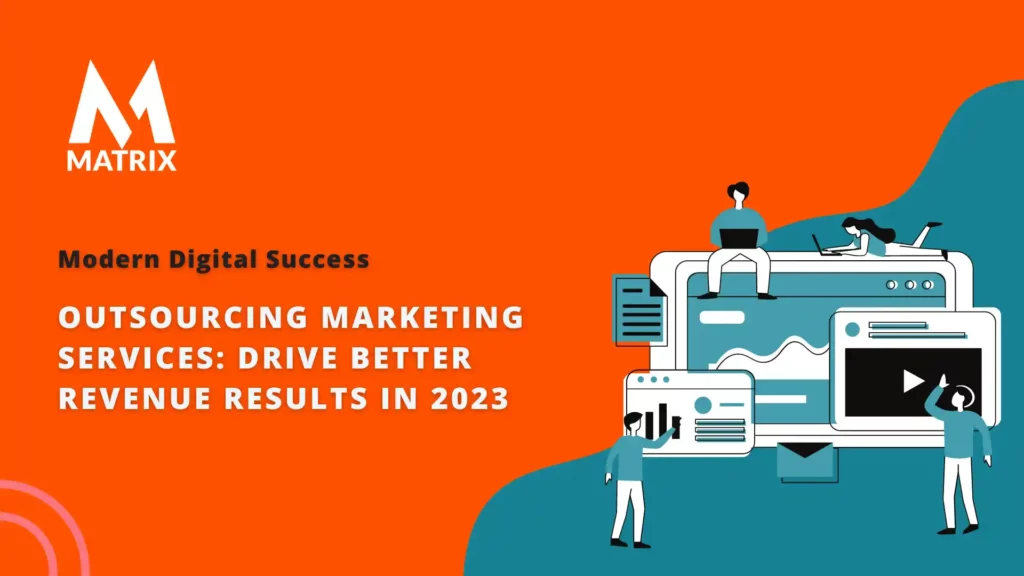Campaign Monitor vs. Mailchimp, the winner in 2022
Campaign Monitor or Mailchimp – but which email platform is best for you?
If you’re a technology marketer, then you know that email marketing is one of the most powerful tools at your disposal. To make the most of this tool, you must use an email marketing platform to deliver results. So, which platform should you choose: Campaign Monitor or Mailchimp?
Are you looking for an email marketing platform to deliver results?
Campaign Monitor and Mailchimp are great options, but which is right for you? We compare the two platforms to help you make the best decision for your business.
You can create beautiful email campaigns with either platform that look great on any device. You’ll also have access to powerful features to help you reach your target audience and achieve your marketing goals.
Technology marketers always look for the best email marketing platform to help them grow their businesses.
Campaign Monitor and Mailchimp promise killer campaigns, but which is right for you?
We compare these two platforms to help you make the best decision.
With either of these platforms, you can create beautiful email campaigns that look great on any device. You’ll also have access to powerful features to help you reach your target audience and achieve your marketing goals.
Many parameters can debate Campaign Monitor vs. Mailchimp. But which is right for you?
Let’s dive in to find Campaign Monitor vs. Mailchimp can be debated by many parameters. But which is right for you?
Campaign Monitor vs. Mailchimp: An overview

What is a Campaign Monitor?
Campaign Monitor is a service that helps you create, send, and track email marketing campaigns. It offers many features, including customizable templates, automated reports, and A/B testing.
Campaign Monitor is also well-known for its high deliverability rates. It’s a good choice if you’re big on email marketing and need an all-in-one service.
What is Mailchimp?
Mailchimp provides various services that help you create, send, and track email campaigns. This includes templates, automated reports, and A/B testing.
It doesn’t offer many advanced features like Campaign Monitor does — for this reason, we recommend it as a free alternative to paid solutions like Constant Contact or SharpSpring.
However, Mailchimp lacks deliverability rates — which means it may be harder to get your emails in front of your subscribers’ eyes. If that’s important to you (and why wouldn’t it be?), consider one of the companies above that provides this information.

Campaign Monitor features
Campaign Monitor offers many features to help you create and send successful email campaigns. Some of these features include:
- A wide range of templates to choose from or the ability to create your own
- Automated email marketing
- Detailed campaign reports that show you how your campaign performed
- The ability to target your audience by demographics, interests, and more
- 24/7 support, including live chat
- Access to 30+ GIPHY animated GIFs, which you can include in your email campaigns
Campaign Monitor’s target market is business owners and marketers looking for tools to help them create professional emails that engage their audience. Campaign Monitor offers a free trial, so you can try it before buying.
Note: Campaign Monitor uses Google Analytics to monitor signups. If you do not want your personal information collected by the advertisers on your list, unsubscribe from each ad before signing up for an account.

Mailchimp features
Mailchimp is one of the most popular email marketing platforms, with over 15 million users worldwide. Their services are completely free, up to 2,000 subscribers, more than most small businesses will ever need.
You can create unlimited campaigns and send them to up to 2,000 subscribers for free. And if you upgrade your account, you’ll get access to their suite of powerful marketing tools, including:
- The ability to customize your signup forms so they match your brand’s look and feel
- A wide range of templates to choose from or the ability to create your own
- Access to 40+ prebuilt email content blocks so you can easily customize emails without starting from scratch each time
- Automated email marketing helps you build long-lasting relationships with customers through drip campaigns that send out one message per day over several weeks
- Detailed campaign reports that show you how your campaign performed
- The ability to target your audience by demographics, interests, and more
- Access to their A/B testing feature so you can test different versions of emails on a small group or control group before sending them out to the general public
- 24/7 support, including live chat
Their free trial lasts 30 days. After that, Mailchimp offers three paid accounts: $10 per month for up to 2,000 subscribers, $15 per month for up to 5,000 subscribers, and $30 per month for up to 10,000 subscribers.
If you need accounts that exceed these limits (or if you’d like access to all of Mailchimp’s features), their paid plans start at $50 per month for up to 2,000 subscribers.
MailChimp is great for small businesses and larger companies who want email marketing software with more features than most other free tools offer. It is worth mentioning that MailChimp does not publish information about the security standards to protect user data.
We recommend viewing their privacy policy before signing up. Note: Mailchimp’s account creation process will monitor your signups through Google Analytics. However, if you do not want your personal information collected by the advertisers on your list, unsubscribe from each ad before signing up for an account.
Campaign Monitor vs. Mailchimp: Ease of Use

Mailchimp’s drag-and-drop builder makes content creation straightforward, and automatic resizing capabilities ensure images are optimized for mobile devices.
For the most part, Campaign Monitor achieves this same usability with its modern template editor (which is powered by Adobe Experience Manager).
Overall, Campaign Monitor is slightly more user-friendly than Mailchimp regarding design customization options and reporting features. We recommend checking out both editors to see which suits your style better.
When it comes to features, both tools are pretty comparable. They offer a wide range of templates, integrations, and analytics tools. However, Campaign Monitor has a slight edge in offering more personalized automation options and more powerful A/B testing tools.
Campaign Monitor is easy to use; you don’t need special skills or design knowledge to create beautiful, professional email campaigns. Campaign Monitor’s drag-and-drop interface makes creating and customizing your campaigns simple, and you can easily add images, videos, and social media content.
Mailchimp is also extremely easy to use, with a simple drag-and-drop interface, making creating and customizing campaigns a breeze. You can easily add images, videos, and social media content to your campaigns, and there’s no need for any special design skills or knowledge.
Campaign Monitor vs. Mailchimp Templates
When it comes to email templates, Campaign Monitor has the edge. All Campaign Monitor’s templates are fully customizable, so you can easily make them look and feel exactly how you want. Plus, all Campaign Monitor’s templates are responsive and look great on any device.
Mailchimp’s templates are also fully customizable, and they’re all responsive. However, there are fewer templates to choose from than with Campaign Monitor.
Both Campaign Monitor and Mailchimp offer a wide range of templates to choose from, all of which are customizable. However, Campaign Monitor’s library of templates is much more extensive than Mailchimp’s, so you’re more likely to find a template that matches your needs.
Campaign Monitor vs. Mailchimp: Pricing and Plans

Campaign Monitor pricing and Mailchimp offer free plans for users who manage less than 2,000 subscribers (500 contacts for Mailchimp) or send less than 12,000 emails monthly.
We like that both companies charge based on email sends rather than list sizes. That said, the price difference between Campaign Monitor and Mailchimp pricing is marginal.
However, Mailchimp offers many tiers to accommodate small businesses and large enterprises alike (and runs sales from time to time), and Campaign Monitor offers larger discounts for its pricier tiers.
When it comes to pricing, Campaign Monitor is more expensive. Their cheapest plan starts at $9/month, while Mailchimp’s cheapest plan starts at $0/month.
However, Campaign Monitor does offer more features for their higher-priced plans, so it’s important to consider what you need from your email marketing tool.
Campaign Monitor vs. Mailchimp: Integration with other software
Campaign Monitor and Mailchimp are neck and neck when it comes to integrations. Both services offer various integrations, including CRMs, e-commerce platforms, and CMSs.
Regarding the sheer number of integrations, Mailchimp beats out Campaign Monitor.
Campaign Monitor vs. Mailchimp Salesforce integration is great!
However, Mailchimp’s integrations are not always as well-developed as those offered by Campaign Monitor. For example, Mailchimp’s integration with Shopify is not as robust as Campaign Monitor’s integration.
Campaign Monitor vs. Mailchimp We like Mailchimp for WordPress as an option.
Campaign Monitor vs. Mailchimp: Customer Service and Support

Both Campaign Monitor and Mailchimp offer a variety of customer service channels, including live chat, phone support, and email.
Additionally, both companies provide thorough documentation on their respective websites. We give the edge to Mailchimp for its 24/7 live chat support.
While Campaign Monitor offers live chat during regular business hours, we found it difficult to contact representatives when we needed help most – such as evenings and weekends.
With that said Campaign Monitor has improved this year by adding more proactive outreach (via email and social media) and by bringing back 24/7 chat for users who upgrade to higher-tier paid plans or host large numbers of subscriber lists.
Campaign Monitor Support
Campaign Monitor offers 24/7 support, including live chat. You can also access their extensive knowledge base and tutorials to help create and send your email campaigns.
Mailchimp Support
MailChimp offers 24/7 support, including live chat. They also have a huge library of resources, including articles, videos, and templates to help you create successful email campaigns.
Their support staff is knowledgeable and helpful and offers support in various languages. MailChimp is a great option if you need help with anything related to email marketing.
Campaign Monitor vs. Mailchimp: Subscriber Management and Segmentation
Mailchimp was the first online email marketing service to offer full subscriber segmentation. Today, both services allow users to create customizable segments of subscribers based on their actions (for example, if they opened an email or clicked a link) and upload lists of contacts manually.
However, Campaign Monitor has the edge over Mailchimp because it includes list management tools allowing users to export, import, delete, and rename lists, merge multiple lists, and perform super-fast searches using custom filters.
While these tools can be replicated in Mailchimp using third-party services and scripts, they save a lot of time and can be helpful when working with large lists. Mailchimp does not include these features in its free version (only available for paid tiers).
Campaign Monitor vs. Mailchimp: Personalization and A/B Testing Tools

Like many email marketing services today, Campaign Monitor and Mailchimp allow users to add personalized content to their emails.
For example, you can add a “name” field to your email template so subscribers can see their name when they open the email (if you know what information is included in the subscriber database).
Additionally, Campaign Monitor offers conditional logic, which allows you to send different versions of an email campaign based on pre-defined parameters, such as time of day and subscriber list.
Mailchimp also has A/B testing capabilities: while it doesn’t offer the same customization options as Campaign Monitor for this feature, its drag-and-drop tool is easy enough for beginners who don’t need extensive automation features.
Campaign Monitor vs. Mailchimp: Automation and Workflows
Mailchimp’s automation capabilities are excellent, allowing users to create custom workflows as well as triggered campaigns.
We like that Campaign Monitor has improved this area of its platform with a quick workflow editor (although we don’t think it’s quite on par with Mailchimp).
Aside from these two services, many other email marketing providers offer some level of automation and/or workflows (for example, Constant Contact and Vertical Response).
Campaign Monitor vs. Mailchimp: Targeting Options
Both Campaign Monitor and Mailchimp have fairly robust profile settings for subscribers, including fields such as country/region, postal code, gender, subscriber type, purchase history, and job title.
Campaign Monitor even lets users upload custom profile fields from a spreadsheet.
While we appreciate these options, Mailchimp has recently introduced a combined subscriber list feature that allows you to build one profile for all of your subscribers across different lists (rather than managing multiple profiles).
AIBrandPad, a Generative AI SaaS Brand Platform, is equipped with professional experts providing wisdom to assist you in elevating your brand through better content production. Discover the possibilities of AIBrandPad today!
Unlock
Your
Brand
AIBrandPad
Mobile Capabilities: Campaign Monitor vs. Mailchimp
Both Campaign Monitor and Mailchimp offer mobile-responsive templates that allow you to send emails that look great on any device.
Both companies optimize images automatically—but only if they are hosted online (not included in template images). For more complex customizations, Campaign Monitor offers a Font Awesome library with 600+ customizable icons for use in your messages.
Additionally, both services let you add in-email forms to your messaging so that you can collect contact data from subscribers directly within the email message itself.
Conclusion for Campaign Monitor vs. Mailchimp
Campaign Monitor vs. Mailchimp both promise users killer email marketing campaigns. We test these claims in our comparison of Campaign Monitor vs. Mailchimp.
For the most part, we think that Campaign Monitor is slightly more user-friendly than Mailchimp in terms of design customization options and reporting features (although we don’t think it’s quite on par with Mailchimp).
If you want to try out an email service provider for free, check out either company! Or if you’re looking for a full suite of online marketing tools.
Consider checking out Constant Contact or Vertical Response instead, including a website builder, landing pages, SEO optimization, etc.
- Campaign Monitor offers conditional logic, which allows you to send different versions of an email campaign based on pre-defined parameters, such as time of day and subscriber list.
- Mailchimp also has A/B testing capabilities: while it doesn’t offer the same customization options as Campaign Monitor for this feature, its drag-and-drop tool is easy enough for beginners who don’t need extensive automation features.
- It’s great that both Campaign Monitor and Mailchimp offer mobile-responsive templates that allow you to send emails that look great on any device.
- Users can use either platform for free for 30 days.
- Campaign Monitor provides account replying, scheduling, and reporting tools to track campaign progress.
- Mailchimp users can create custom workflows as well as trigger campaigns. We like that Campaign Monitor has improved this area of its platform with a quick workflow editor (although we don’t think it’s quite on par with Mailchimp).
- Users of either platform can upload user profile fields from a spreadsheet for targeting purposes.
- A new combined subscriber list feature allows you to build one profile for all of your subscribers across different lists for Mailchimp, whereas multiple profiles are required within Campaign Monitor.
- Campaign Monitor offers a Font Awesome library with 600+ customizable icons for more complex customizations, while Mailchimp users can add their custom HTML.
- Campaign Monitor offers conditional logic, which allows you to send different versions of an email campaign based on pre-defined parameters, such as time of day and subscriber list.
- Mailchimp also has A/B testing capabilities: while it doesn’t offer the same customization options as Campaign Monitor for this feature, its drag-and-drop tool is easy enough for beginners who don’t need extensive automation features.
- It’s great that both Campaign Monitor and Mailchimp offer mobile-responsive templates that allow you to send emails that look great on any device.
- Users can use either platform for free for 30 days.
- Our tests found that Campaign Monitor is slightly more user-friendly than Mailchimp regarding design customization options and reporting features (although we don’t think it’s quite on par with Mailchimp).
- If you want to try an email service provider for free, check out either company! Or, if you’re looking for a full suite of online marketing tools – including a website builder, landing pages, SEO optimization, etc.- consider Constant Contact or SharpSpring instead.
It’s great that both Campaign Monitor and Mailchimp offer mobile-responsive templates that allow you to send emails that look great on any device.
Campaign monitor offers conditional logic, which allows you to send different versions of an email campaign based on pre-defined parameters such as time of day and subscriber list.
Mailchimp also has A/B testing capabilities: while it doesn’t offer the same customization options as Campaign Monitor for this feature, its drag-and-drop tool is easy enough for beginners who don’t need extensive automation features.
Many parameters can debate Campaign Monitor vs. Mailchimp. But which is right for you?
CMOs are always looking for new ways to increase conversion rates.
But they’re also busy and don’t have time to research the latest marketing trends.
We’ve got you covered with our roundup of the best marketing strategies that will help your company grow in 2022!
General FAQs
Which is better: Campaign Monitor or Mailchimp?

This is a difficult question to answer in that it largely depends on the needs of the individual asking it. For example, Campaign Monitor is more customizable with conditional logic and provides an HTML editor, while Mailchimp has A/B testing capabilities for individuals looking for extensive automation features. Before comparing which service might be better suited to your specific needs, it’s important to thoroughly understand what you are looking to accomplish by using email marketing software. From there, you can decide if Mailchimp or Campaign Monitor best meets your business goals.
What do you think about the free email service providers, like Constant Contact or SharpSpring?
There are a lot of pros to using free email service providers. For one, they’re usually very user-friendly and easy to set up, making them great for beginners. Additionally, free providers often offer a wide range of features – such as templates, analytics, and A/B testing – that can help you create effective email campaigns.
Should I use a paid email service provider if I start with my company?
It depends on your company’s size and your goals. Paid email service providers usually offer more features and customization options than free providers, which can help your company grow. However, if you’re starting, you may not need all the bells and whistles a paid provider has. Try out a few free providers to see which works best for you.
What are some of the best marketing strategies to help my company grow in 2022?
Some of the best marketing strategies to help your company grow in 2022 include creating valuable content, using social media platforms to reach new audiences, and investing in digital marketing tools. Additionally, email marketing remains a powerful tool for reaching customers and building relationships, so invest in a platform that allows you to create effective campaigns.




